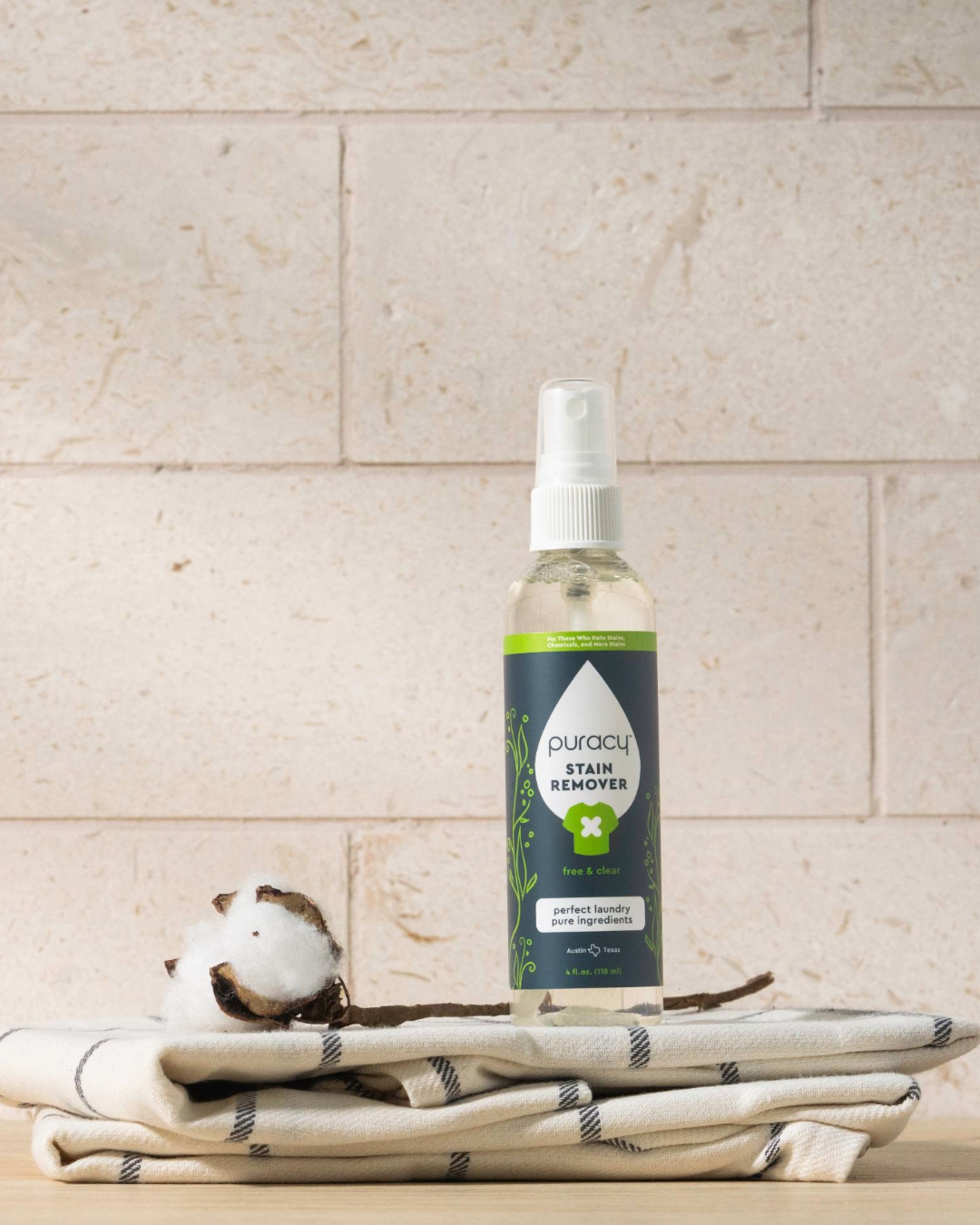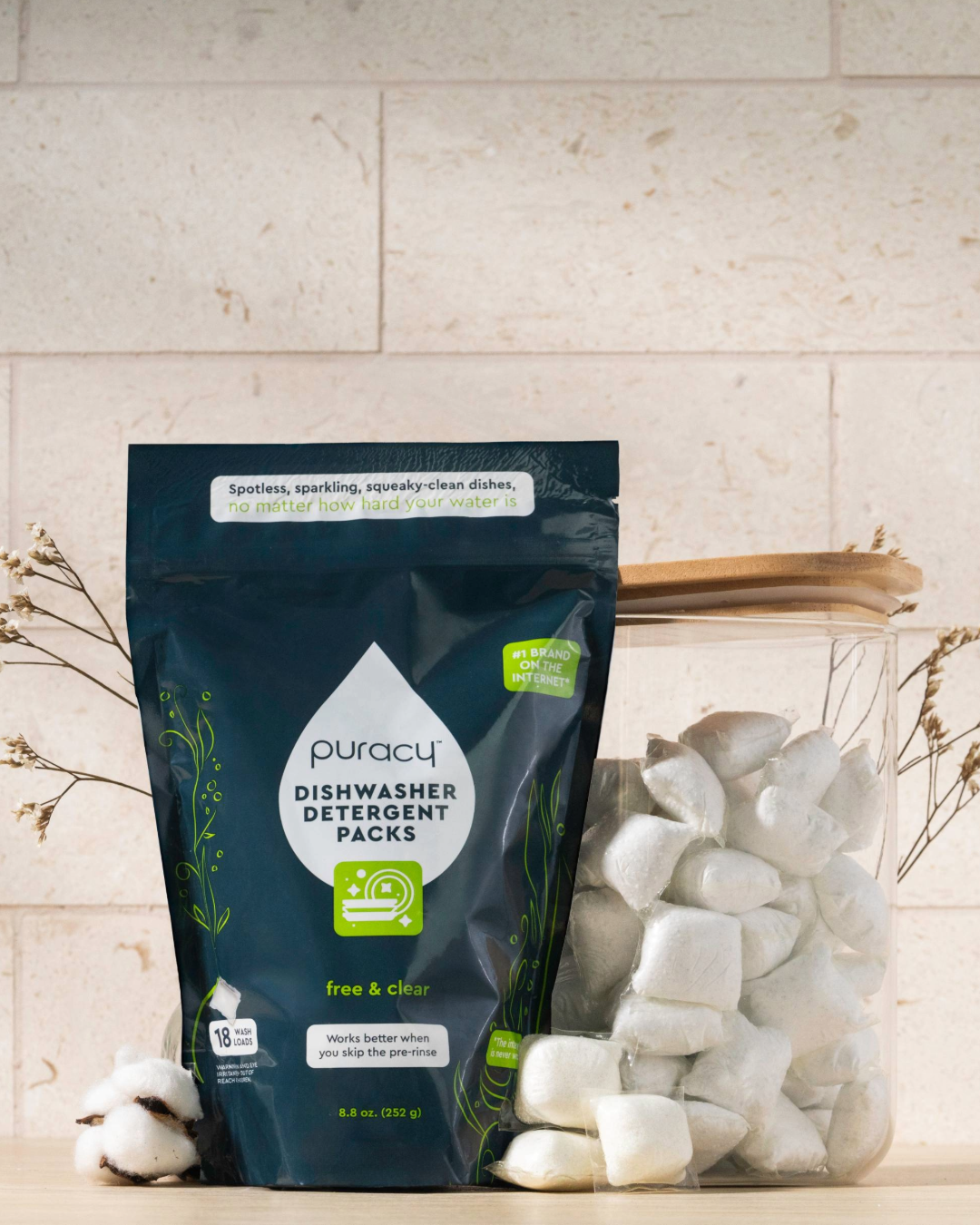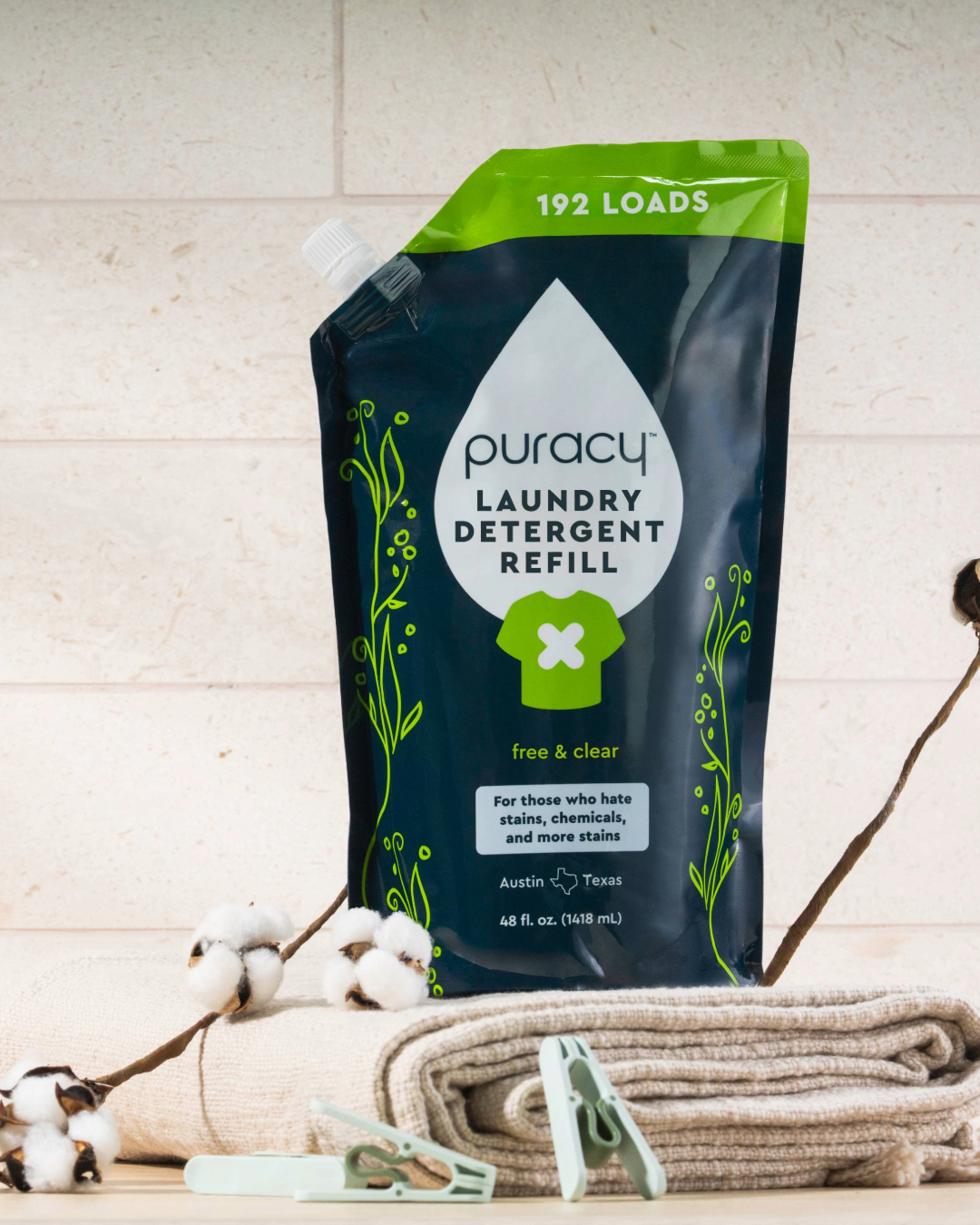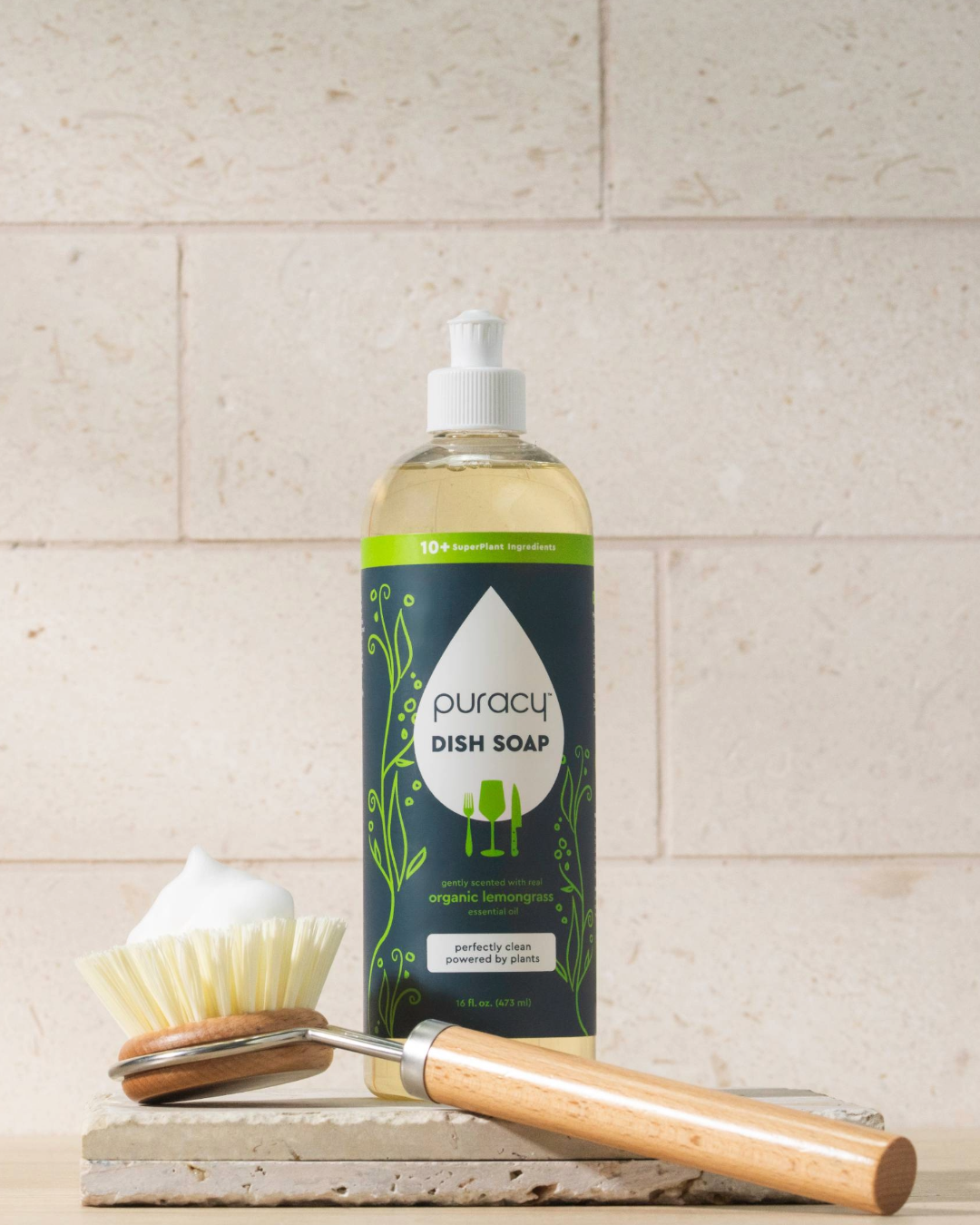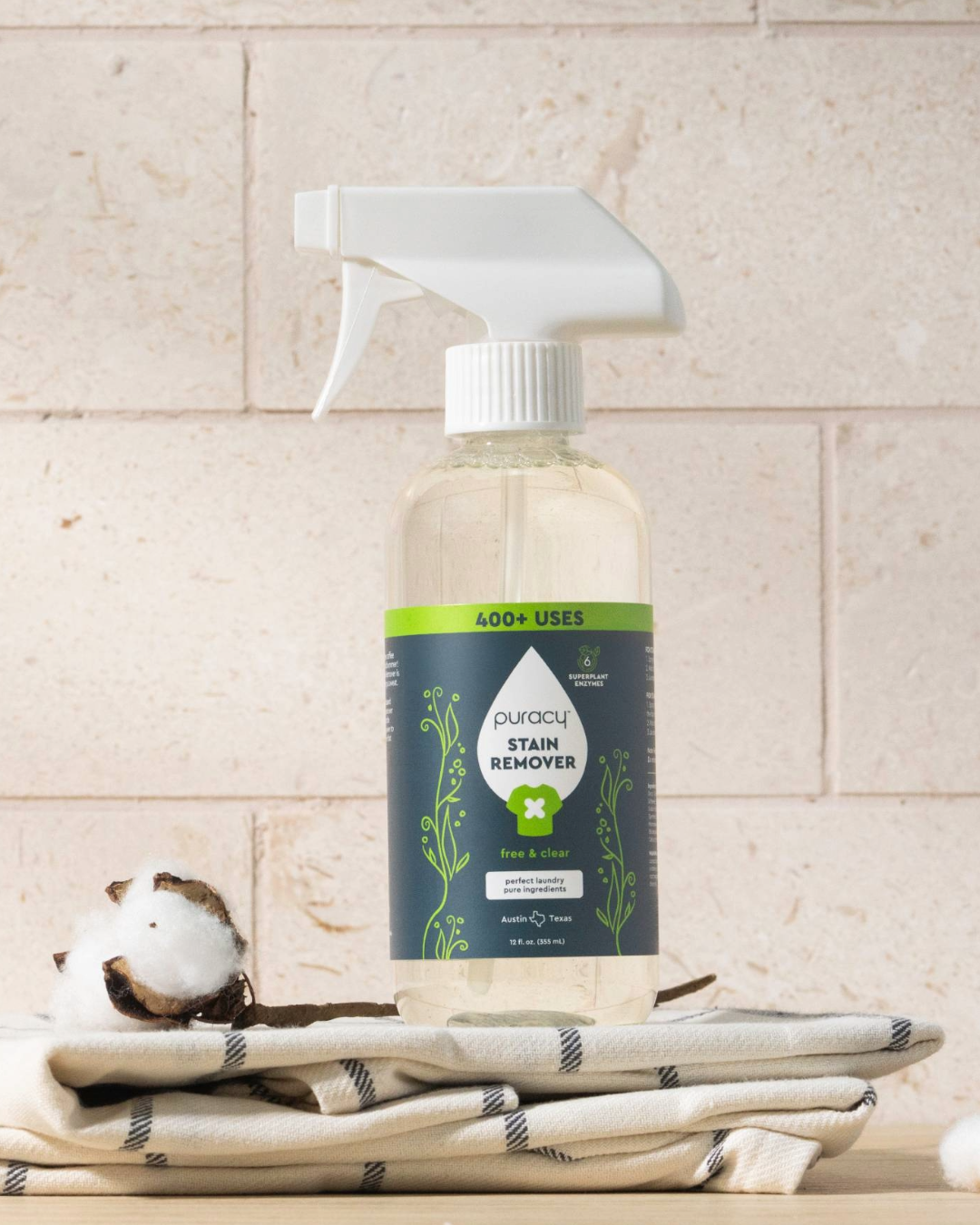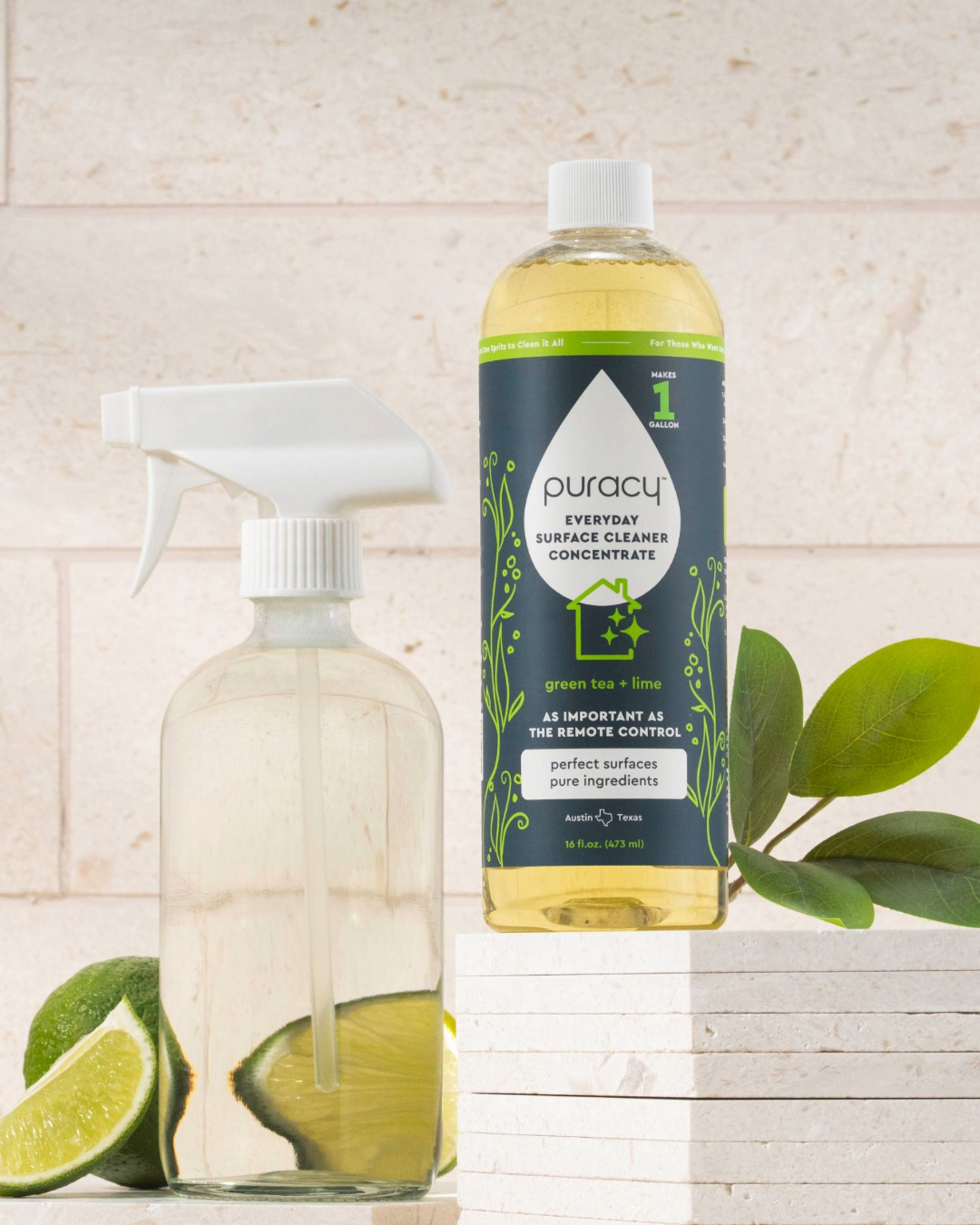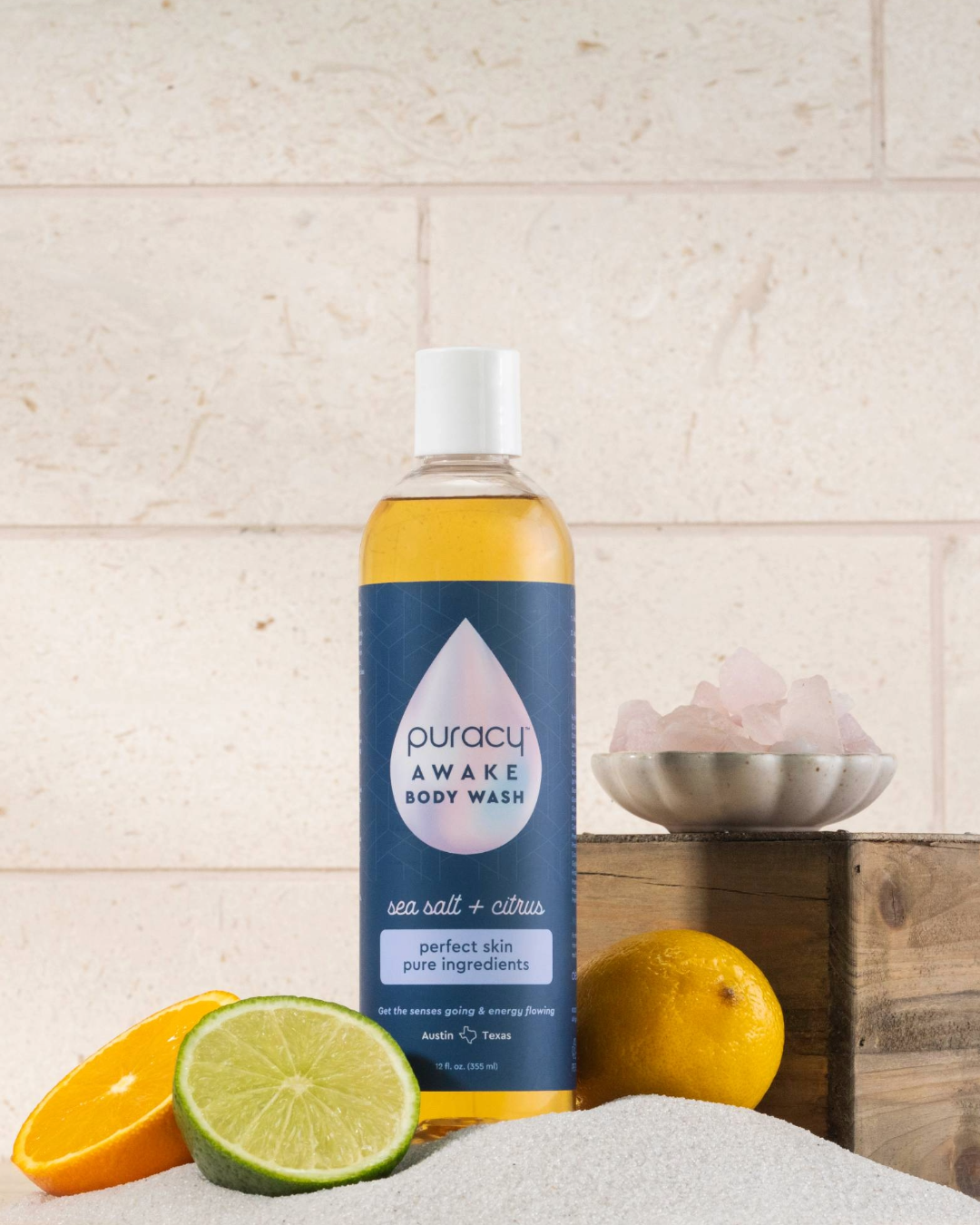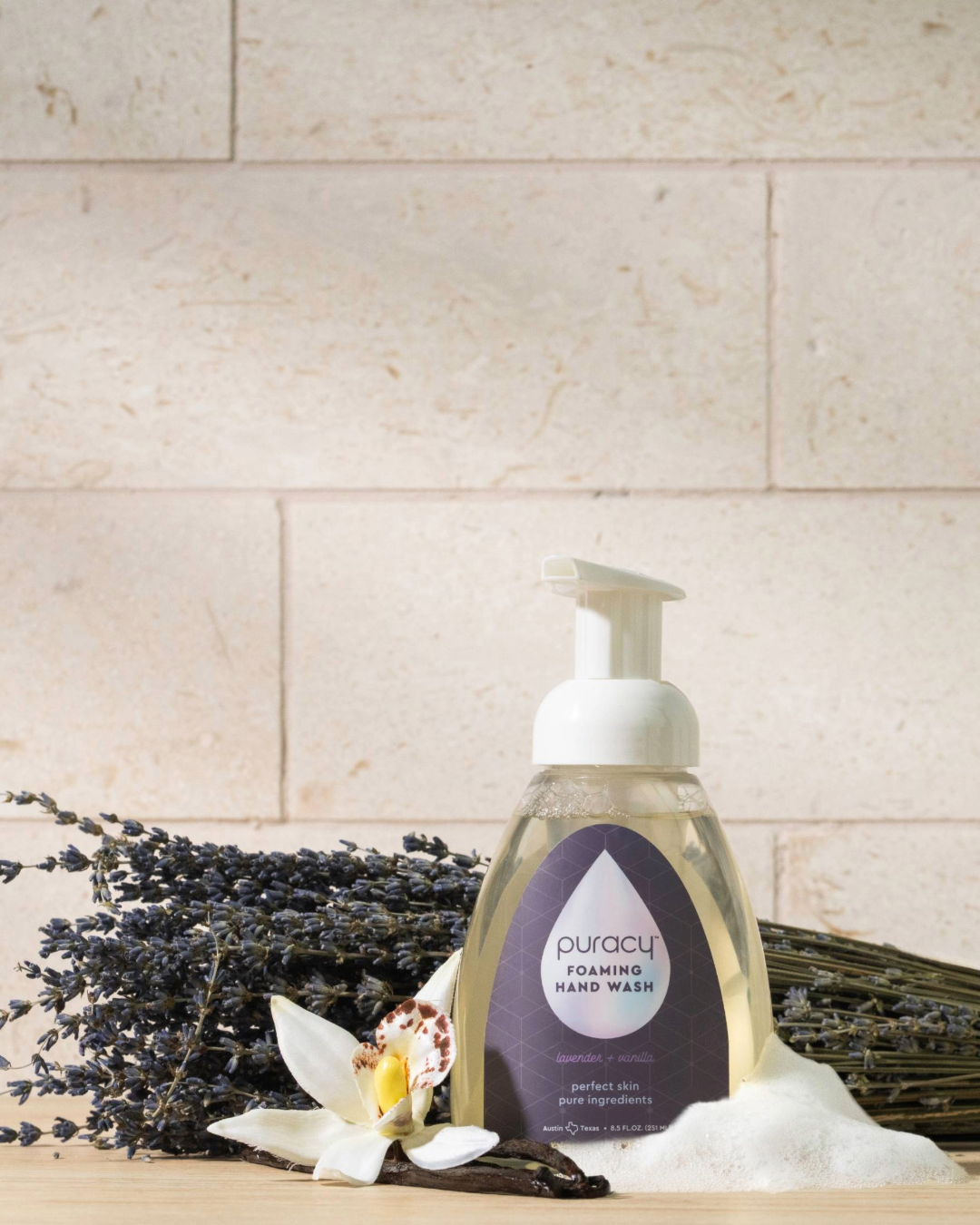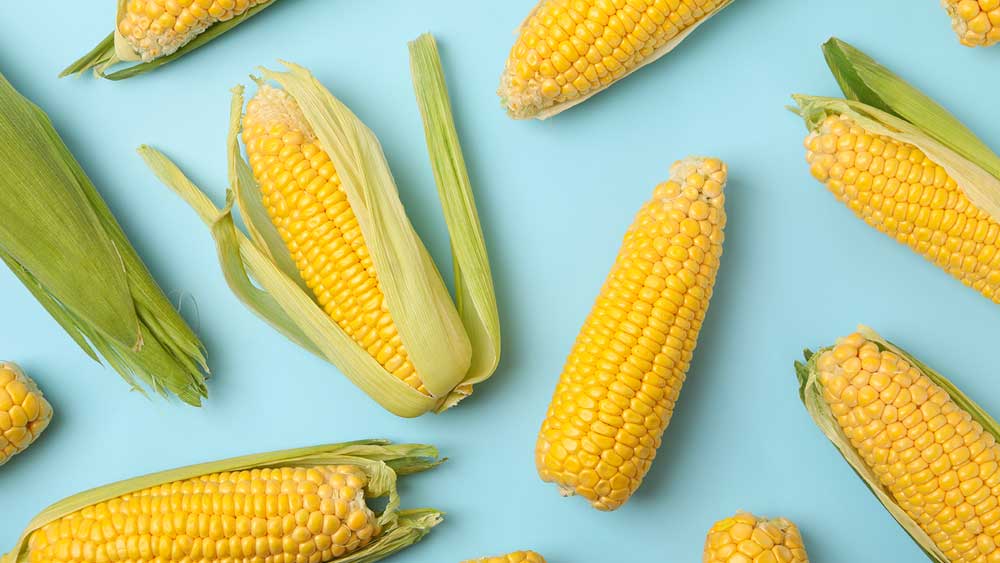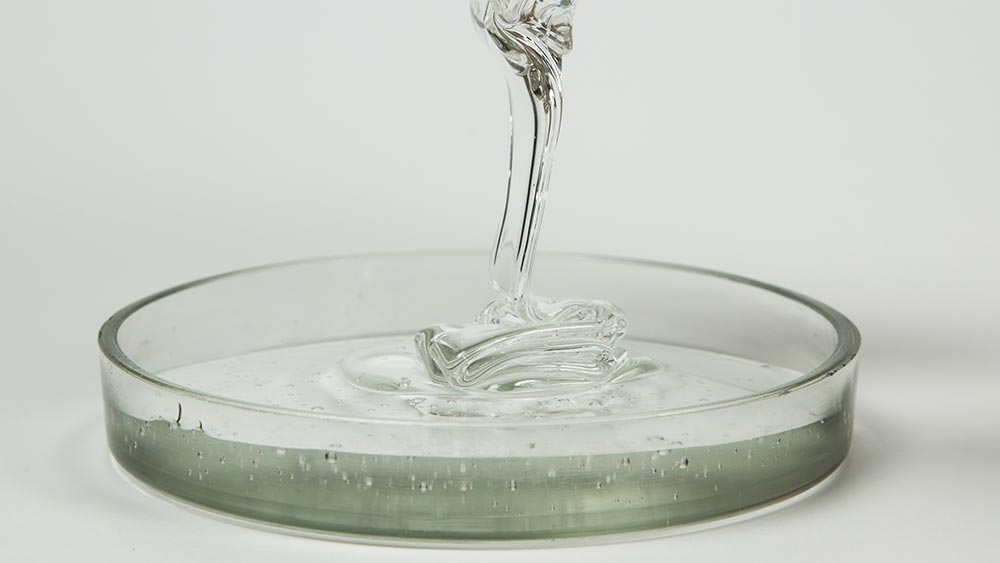
Phenoxyethanol
- Pronunciation: (\ˈfē-nō-ziy-e-thə-ˌnȯl\)
- Type: Synthetic
- Other names: ethylene glycol phenyl ether
What Is Phenoxyethanol?
Phenoxyethanol, also called ethylene glycol phenyl ether, is an oily, colorless liquid with a pleasant odor.[1] It occurs naturally in green tea but can also be synthesized for commercial use.[2]
What Does Phenoxyethanol Do in Our products?
Phenoxyethanol is a preservative, solvent, and antimicrobial ingredient in cosmetics and pharmaceutical products such as antibiotic ointments, bath products, nail care products, eardrops, perfume, makeup, detergent, vaccines, and other products.[3,4,5,6,7] It dissolves in water.[8]
Why Puracy Uses Phenoxyethanol
We use phenoxyethanol in several of our products as a biodegradable preservative that is a better alternative to parabens and formaldehyde. The ingredient also stabilizes products because it does not react with other ingredients, air, or light.[11] Whole Foods has deemed the ingredient acceptable in its body care quality standards.[12] The Cosmetics Ingredient Review has deemed the ingredient safe, and research shows the ingredient is not a strong skin irritant or sensitizer.[13,14,15,16,17]
How Phenoxyethanol Is Made
Phenoxyethanol is typically made by treating phenol with ethylene oxide in an alkaline medium.[9] The resulting ingredient is light in color and has a mild rose odor. Cosmetic-grade phenoxyethanol is highly purified and typically does not have an odor or color.[10]
Certifications

Sources
[1] U.S. National Library of Medicine
[2] Cosmeticsinfo.org
[3] U.S. National Library of Medicine
[4] World Health Organization
[5] Environmental Protection Agency
[6] Personal Care Council
[7] Cosmeticsandtoiletries.com
[8] U.S. National Library of Medicine
[9]U.S. National Library of Medicine
[10] Cosmeticsandtoiletries.com
[11] U.S. National Library of Medicine
[12] Whole Foods Market
[13] Personal Care Council
[14] Personal Care Council
[15] Lovell, C. R., White, I. R., and Boyle, J. (1984). “Contact dermatitis from phenoxyethanol in aqueous cream BP.” Contact Dermatitis 11(3), 187
[16] DeGroot, A. C., Bos, I. D., Jagtman, B. A., Bruynzeel, D. P., Van Joost, T., and Weyland, J. W. (1986). “Contact allergy to preservatives II.” Contact Dermatitis 15(4), 21822
[17] Henke, W. A., Ede, M., Majors, P. A. (1975). “Contact allergy testing: vegetable oil triglyceride and 2-phenoxyethanol.” From COLIPA, 1980, “Summaries of submissions I and II on phenoxyethanol.” Hill Top Research Report no. 75-598-70, Oct. 31, 1975.

